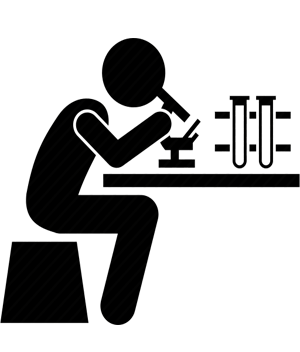Dr Lokesh Sharma has more than 23+ years of dedicated experience in the medical field.

Meet Our Doctor
If you are seeking for best hernia surgeon in Jaipur, Dr. Lokesh Sharma is a well-known doctor experience of 15 years in hernia surgery. He specializes in accurate diagnosis, sophisticated laparoscopic surgery, and patient care.
Being one of the best hernia surgeons in Jaipur, he has expertise in treating all manner of hernias such as inguinal, umbilical, incisional, hiatal, and femoral hernias, with minimal invasive techniques that guarantee faster recovery with lesser discomfort.
Meet Our Doctor
Recognizing the symptoms early is crucial for effective treatment. Here are the most common signs that may indicate an issue with your appendix
It is one of the common symptoms of a hernia that is usually seen in the abdomen or groin area. This bulge may become more prominent during standing, coughing, or straining and disappear when lying down. Many people experience severe pain at the site of the bulge. This pain increases when lifting heavy objects, bending, or exercising.
In some cases, people experience nausea, vomiting, and difficulty passing gas or stool. If you are experiencing these symptoms, then it is an indication of a more serious hernia called a strangulated hernia, which is a condition where the blood supply to the trapped tissue is cut off.
If the bulge becomes more painful suddenly, or if you develop fever or digestive issues, it may indicate a medical emergency and require immediate medical help.
In some cases, you can experience some issues like heartburn, trouble swallowing, and chest pain. Sometimes the pain is bearable, but in most cases it becomes mild and requires medical attention.
These are the most common hernias and are also known as groin hernias. They are mainly seen between the lower abdomen and the upper thigh. When an inguinal hernia develops, the intestine or fat may protrude through the defect in the abdominal wall.
This is a less common hernia that occurs in the femoral canal, which runs underneath the inguinal canal.
A congenital diaphragmatic hernia is a birth defect that occurs during fetal development. It means that a fetus’s diaphragm is not fully formed or strong enough to be a muscle barrier between its belly (abdomen) and chest. When a barrier passes through a muscle, it is called a hernia.
It is a condition where a portion of the intestine becomes fat or fluid that pushes through a weak spot. This condition occurs commonly in infants, where it often resolves spontaneously within the year as their muscles develop. However, adults may develop an umbilical hernia, frequently from various factors that increase abdominal pressure, such as chronic coughing, pregnancy, and obesity.
Incisional hernia occurs after abdominal surgery or minimally invasive surgery. The procedure weakens the abdominal muscles, allowing the intestine to push through, resulting in a hernia. This hernia presents as a lump near the laparotomy scar and may become noticeable months or years after the surgery. Most incisional hernias are not serious and do not require medical attention. But a large incisional hernia can cause serious complications.
Femoral Hernia is a type of groin hernia that occurs in the lower body. It develops on the upper part of the thigh near the groin, where adnominal contents pass through a naturally occurring weakness called the femoral canal. It is a less common hernia, and symptoms include abdominal pain, nausea, and vomiting.
Medication
Hernia treatment is largely determined by its size, type, and symptoms. In infants with small symptomless hernias, watchful waiting can be the treatment since they tend to close on their own in some cases. Adult hernias do not easily do so and require treatment.
Non-Surgical Management
In some patients, non-surgical methods are employed to treat symptoms, but not to repair the hernia itself:
Observation
For small, painless, and uncomplicated hernias, a doctor may recommend keeping the condition under observation.
Supportive Truss
A Supportive undershirt or truss can be worn to support the bulge and give relief from discomfort. However, it is necessary to consult a doctor for fitting and usage, as incorrect usage could result in complication.
Surgical Repair
The most common and successful procedure for painful, enlarging, or potentially complicating hernias is surgery. The primary objectives of hernia surgery are to reduce the bulge of tissue back into its normal position and to reinforce the weakened area of the abdominal wall. Surgical repair is in the form of two types:
Open Surgery (Hernioplasty/Herniorrhaphy)
A single larger cut is near the site of the hernia. The protruding tissue is manually forced back by the physician into the abdomen, and the weakened area is closed up with sutures, typically reinforced with a synthetic mesh for extra strength to reinforce and prevent recurrence (hernioplasty).
Minimally Invasive Surgery (Laparoscopic/Robotic Repair)
This involves several small cuts where the surgeon inserts special tools and a small camera (laparoscope) via these small incisions. The surgeon repairs the hernia while viewing inside the belly on a television monitor using the laparoscope. Mesh can be used in this technique as well. Robotic surgery is a new form of minimally invasive surgery where the surgeon controls robotic arms more precisely and delicately. It is important to do surgery with an experienced doctor who is a hernia surgeon in Jaipur.
Determinants of Surgical Technique
Whether open or minimally invasive surgery is employed depends on a few determinants, including:
The hernia surgery may be performed with various types of anesthesia, including:
Local anesthesia with sedation: The area surrounding the hernia is numbed, and the patient is sedated.
Regional anesthesia: An injection is used to numb much of the body, such as the lower half.
General anesthesia: The patient is rendered completely unconscious for the procedure
1. Pain Management
2. Don’t Heavy Lift or Strain
3. Digestion and Diet
If you are looking for hernia treatment in Jaipur, consult Dr.Lokesh Kumar Sharma



Quick Links
Get Direction
Copyright © 2025, All rights reserved, Dr. Lokesh Kumar Sharma
Feel Free to fill the form below!